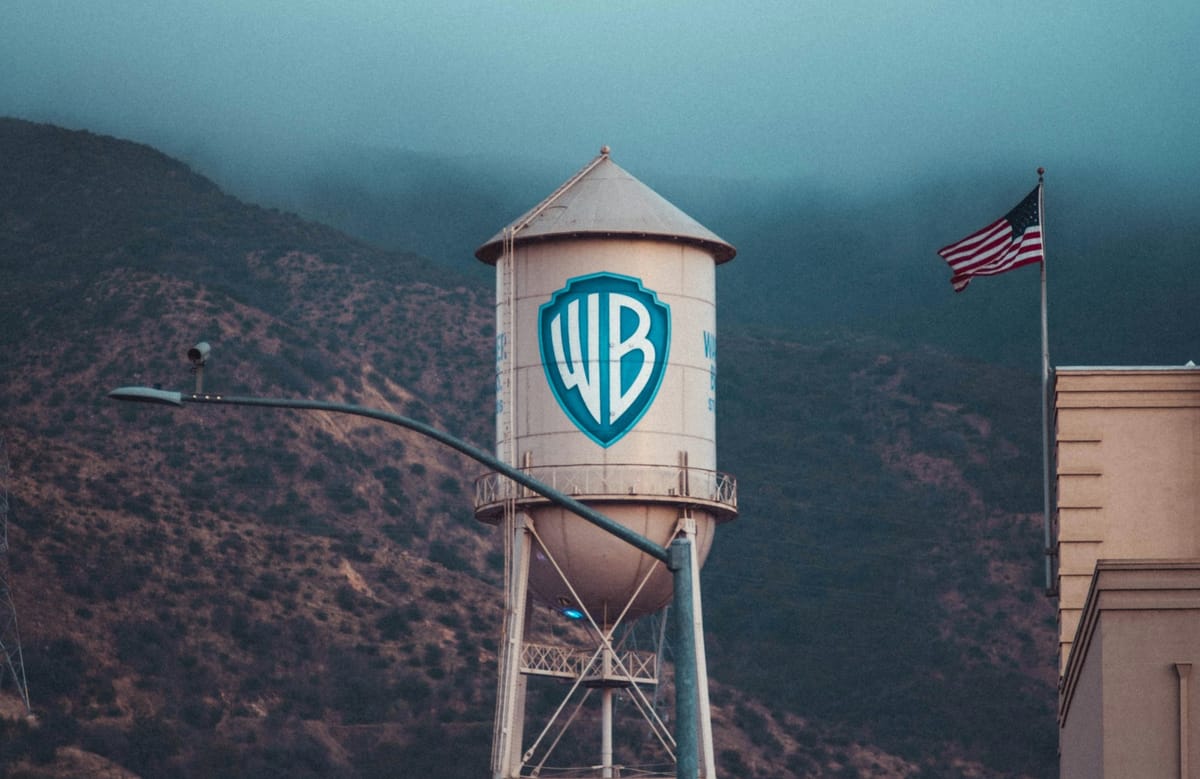Asia’s Media Giants Should Pay Attention to This $60B Warning Shot
Warner Bros. Discovery put itself on the auction block in what could be the decade’s biggest media deal. It’s a live lesson in scale, strategy, and discipline.

Warner Bros. Discovery (WBD) has opened the door to a sale. On October 21, the company initiated a formal strategic alternatives review after receiving unsolicited offers, which sent its stock up roughly 10% and signaled that a bidding war could be coming. Analysts now talk about a deal that could value the company at around US$60 billion when you include its debt burden.
The size alone makes this a defining media moment, not just a headline. It is a real-time case study in how to buy, integrate, or walk away from massive media assets.
It is also a test of discipline. WBD was formed only three years ago in a US$43 billion merger of AT&T’s WarnerMedia and Discovery. With 2024 revenue of US$39.3 billion and debt that several analyses peg above US$53 billion, any buyer must plan for scale, complexity, and interest costs that can limit flexibility.
Deal activity in media is already picking up, and executives in Asia should expect more inbound calls and outbound pitches. The lesson is simple. Scale can help, but only if it fits your core strategy and you have a plan to integrate it.
What WBD’s review signals for Asian buyers

WBD owns CNN, HBO Max, and DC Comics. The company says it is reviewing all options to maximize shareholder value. Analysts have floated a wide field of potential bidders. Paramount appears front of mind. The Ellison family’s capital and connections are viewed as helpful in passing regulators. Comcast fits on paper but is seen as unlikely to enter a bidding war. Netflix, once cool on legacy media, might value the content library and games unit. It would face hard integration questions, not to mention its own scaling challenges.
Amazon could be drawn to WBD’s streaming and TV ad capabilities, which match its push into connected TV and retail media. Apple’s cash is deep, yet its cautious approach and less defined streaming strategy make a bid unlikely. YouTube would gain scale in premium video, but regulatory scrutiny and brand messaging issues would be severe.
Overseas, Sony might prefer studio and library assets while avoiding streaming entanglements. Middle Eastern investors are watching, although politics could shape decisions. One practical insight for Asian buyers: sellers prefer a clean exit. Carve-outs leave orphans. If you cannot make the whole work, expect to pay a premium for the parts others also want.
The hard part is not the deal, it is integration
History is blunt. The AOL and Time Warner tie-up, often labeled the worst merger of all time, collapsed under external shocks and internal dysfunction. The WBD combination has faced its own integration hurdles, with high leverage and cascading operational issues that have drawn critical commentary. When you hear talk of combined benefits adding up to billions, ask for the hard math, not the press release. Culture, decision rights, and talent flight are where media mergers go to die.
Integration discipline matters. BCG recommends defining a few critical integration moves, locking accountabilities early, and protecting the parts of the business that drive cash. In Asia Pacific, people risks need an explicit plan, from retention of creative leaders to incentives that avoid brain drain. Aon outlines how to align leadership, rewards, and culture during deals. This is not soft stuff. In media, a lost showrunner or sales lead can erase the combined benefits you promised your board.
Debt also reshapes choices. Independent assessments show WBD’s debt load is a real constraint. If an asset requires heavy investment, layers of interest costs can turn promised returns into a shrug. Buyers should be skeptical of any model that needs perfect streaming churn assumptions to work.

Price the library, not the dream
Content libraries hold real value if you understand their cash dynamics. Library monetization depends on title relevance, rights clarity, and distribution windows. Overpaying for brand halo while underestimating rights complexity is a common mistake. Practical buyers start with the catalog, not the sizzle. Guidance on content library valuation considerations suggests looking closely at revenue durability, licensing constraints, and renewal risks.
Platform claims deserve a hard look, too. Some suitors talk up ad tech or gamer flywheels. If you cannot operate those assets at scale, they are distractions.
Netflix could gain, but stitching a studio-centric culture into a product-led company is no small task. Amazon’s interest in streaming and TV advertising looks strategically coherent, yet any network asset would invite new regulatory questions. Sony’s likely interest in studio and library pieces, and not in a streaming bundle with regulatory risk, is a reminder that focus often beats empire building.
Critics have already framed WBD’s recent history as a cautionary tale about rushing into grand integrations without clear guardrails. If you hear big combined benefits numbers tied to vague plans, treat them as marketing, not math.
Be ready for time, regulation, and geopolitics

Big media deals rarely run fast. Acquisition timelines often stretch because antitrust reviews, lender consents, and content partner approvals all take time. Planning for elongated acquisition timelines is a practical necessity, not pessimism. The Skydance and Paramount transaction shows how complex governance and stakeholder dynamics can be before a single regulator weighs in.
Capital in Asia is ready. Japan’s deal market is hot, and private equity firepower is rising in certain markets, a trend that could put more Asian buyers into the frame.
Cross-border experience also carries lessons. Past Japanese media acquisitions highlight cultural friction, slow decision cycles, and brand misunderstandings that later drag performance. None of these pitfalls is inevitable, but each one is predictable. In media, local creative talent and autonomy often matter more than org charts.
Valuation discipline is your safety net. Media distribution platform valuations vary widely based on monetization and control of audience data. The upcycle in media and entertainment M&A can tempt buyers to pay for momentum that may not last.
A simple deal filter for Asian CEOs
- Strategic fit: Does this asset improve your core, not create a new one you cannot run?
- Unit economics: Can you prove cash generation without heroic assumptions on churn or ad CPMs?
- People: Which creators, sellers, and product leaders must you retain, and how will you do it?
- Rights and library: Are the rights clean, renewable, and usable across your markets?
- Regulatory map: What approvals, remedies, or divestitures are likely by market?
- Integration pacing: What will you integrate now versus protect and run independently for two years?
WBD’s review is a live-fire exercise for media buyers. The company’s size, brands, and debt make it a complex prize. The winners will be those who buy only what they can operate, price the library like owners, and treat integration as a design challenge, not an afterthought.
Want to stay up-to-date on the stories shaping Asia's media, marketing, and comms industry? Subscribe to Mission Media for exclusive insights, campaign deep-dives, and actionable intel.







